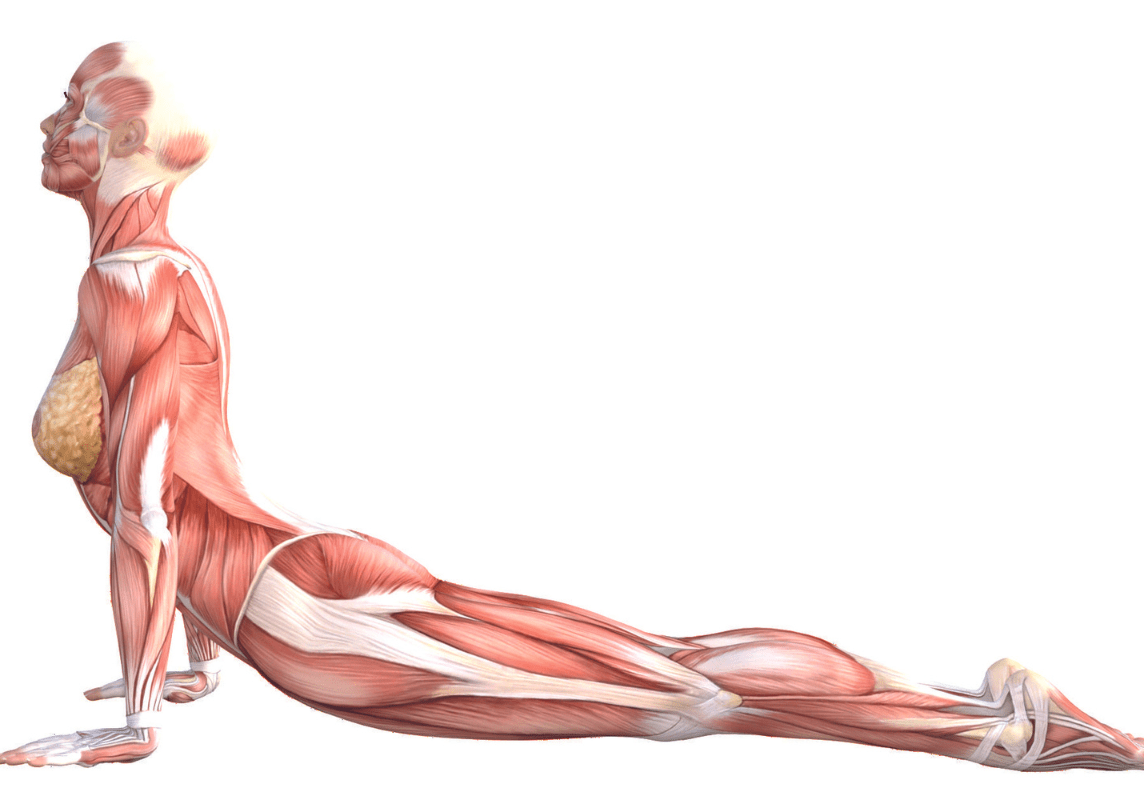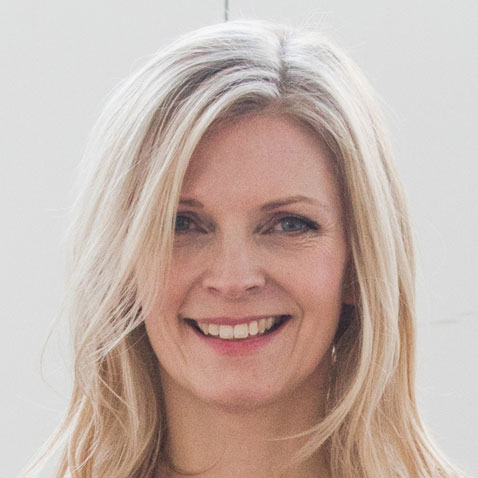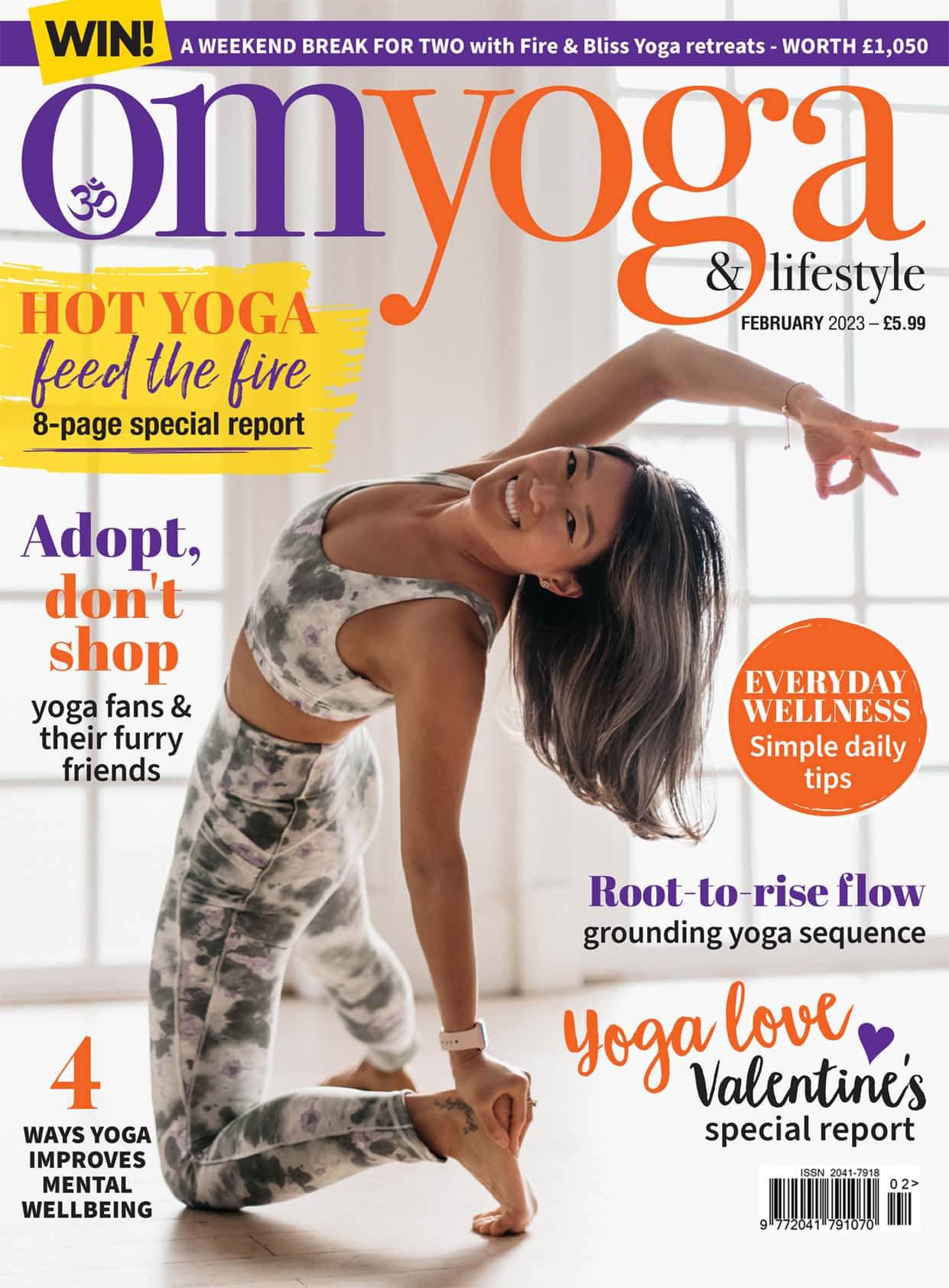
A 360º overview of...
Upward-Facing Dog Pose
(Urdhva Mukha Svanasana)
With Dr Kiki Morriss
Upward-Facing Dog Pose is a back bending position that requires considerable strength from your legs and arms. It gives a strong stretch to the front of your body, opens your chest and improves the flexibility of your spine.
Moving into the pose
- Start in a prone position with your legs straight and the tops of your feet resting on your mat.
- Bend your elbows and place your hands on the ground on either side of your upper body, so they are about halfway down your ribcage.
- Push into your hands, straighten your arms and lift your legs and the front of your hips off the ground.
- Keep the tops of your feet on the mat.
- Lift your chest and arch back.
Focus your gaze
- Your focal point (drishti) is your nose or your third eye. If you prefer, gaze at a fixed point straight ahead of you, or close your eyes and draw your focus inwards.
Head & Face
- Lift your chin and take your head back.
- Avoid constricting the back of your neck or straining your throat.
- Keep the back of your neck long.
- Soften your face and your jaw.

Arms & Hands
- Press down through your hands and push the floor away from you.
- Engage your triceps to straighten your elbows.
- Keep your arms strong and engaged. Avoid hanging from your shoulders.
Shoulders
- Roll your shoulders back and down.
- Draw your shoulder blades down your back.
Chest
- Open your chest.
- Broaden across your collarbones.
- Lift your sternum and the top of your ribs.
Back
- Use your rhomboids to draw your shoulder blades towards the midline.
- Engage your erector spinae to extend your spine.
- Use your gluteus maximus and gluteus medius to extend your hips and thighs.

Feet & Legs
- Position your feet no more than hip-width apart to avoid stress on your lower back.
- Press your feet onto your mat, and keep your legs strong and engaged.
- Use your quadriceps to extend your knees.
- Press down through your big toes and your little toes.
- Avoid allowing the legs to roll inwards by lifting your inner legs and be on the centre of the tops of your feet.
Practicing Upward-Facing Dog Pose
- Use Child's Pose as a counter-pose after practicing Upward-Facing Dog Pose.
- Combine Upward-Facing Dog Pose with Downward-Facing Dog Pose, alternating the poses from one to the other. Practice rolling your feet over your toes, from one pose to the other.
- Then insert Chaturanga Dandasana into the sequence.
Benefits
- Stretches the front of your body – chest, shoulders, abdomen and front of hips.
- Strengthens the legs and arms.
- Improves posture.
- Increases flexibility of the spine.
- Focuses the mind.
Modifications and contraindications
- If it is too challenging to lift your legs and hips off the floor, try placing a cushion or rolled up blanket under the tops of your thighs. This will help to support your lower back.
- To get a better lift, try placing your hands on yoga blocks.
- Avoid this pose if you have a wrist or back injury.
- Increases flexibility of the spine.
- Focuses the mind.






